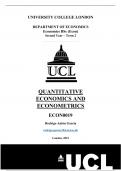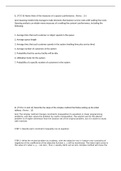Samenvatting
ECON0019 (Quantitative Economics and Econometrics) Term 2 Summary - UCL Economics BSc Second Year
- Vak
- Instelling
- Boek
Summary of Term 2 taught in ECON0019 (Year 2021/2022) Detailed notes from lecture notes, textbooks and other materials. Topics covered include: 1) Potential Outcomes and Experiments, 2) Instrumental Variables I, 3) Instrumental Variables II, 4) Simultaneous Equations Models, 5) Limited Depend...
[Meer zien]





